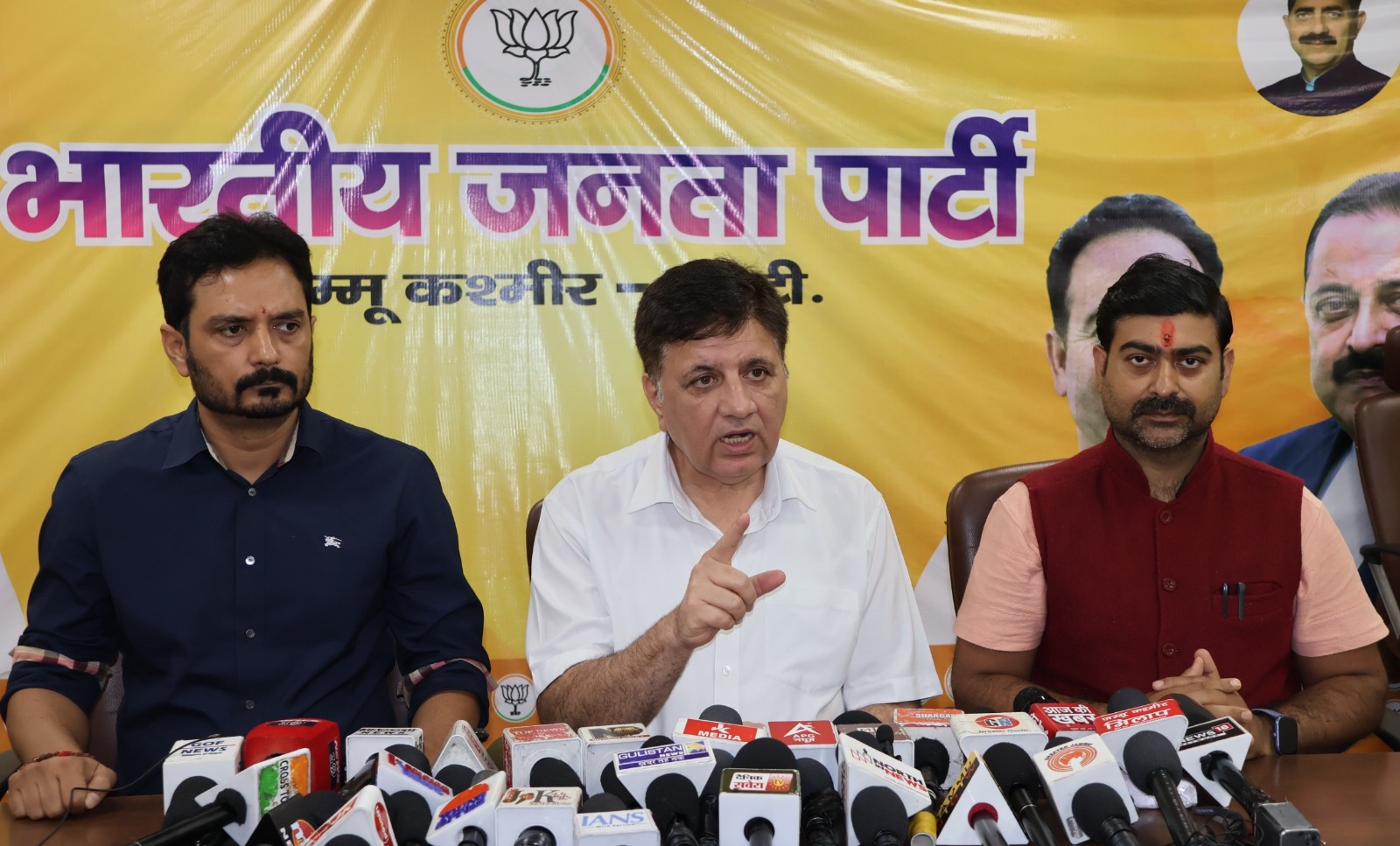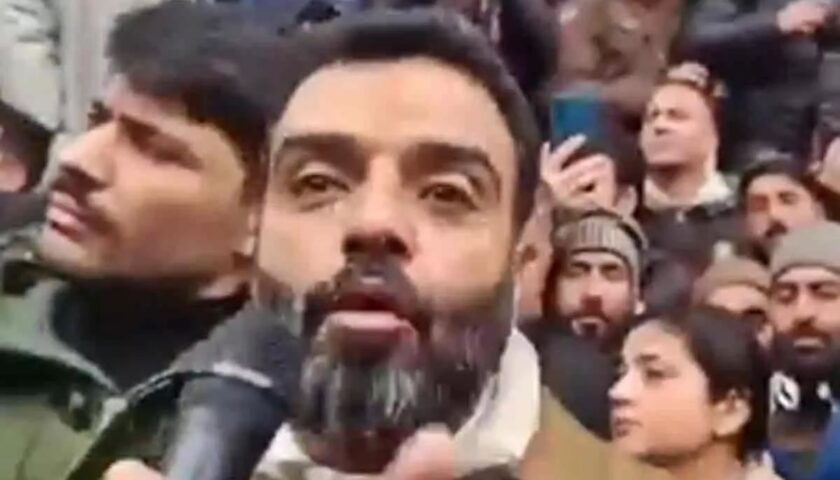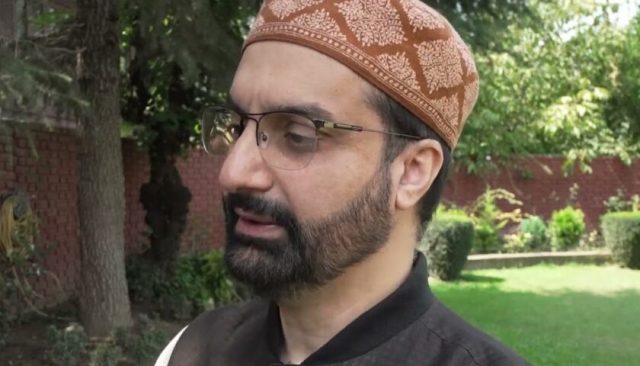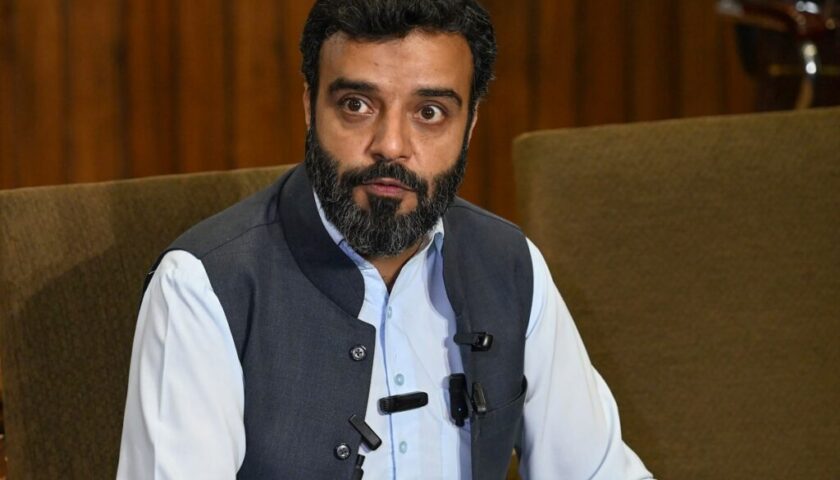Law Vs Legacy: BJP Accuses CM of Undermining Order in J&K
By: Javid Amin | Srinagar | 15 July 2025
As Chief Minister Omar Abdullah’s July 14 actions and subsequent July 15 speech gained national attention, the Bharatiya Janata Party (BJP) wasted no time in mounting an aggressive counteroffensive. Their message: Omar’s defiance wasn’t an act of democratic courage—but political provocation.
The Jammu & Kashmir unit of the BJP accused Omar of mocking law enforcement, glorifying historical unrest, and endangering public order by dramatizing the Martyrs’ Day observance.
“It was a media stunt aimed at reviving separatist sentiment under the garb of history,” said Sunil Sethi, BJP’s Chief Spokesperson.
These accusations marked a clear intensification of political polarization in Kashmir. What had begun as a symbolic act of remembrance quickly spiraled into a clash of narratives—with one side invoking historical justice, and the other condemning it as dangerous nostalgia.
What Triggered the BJP’s Response?
At the heart of the controversy was Omar Abdullah’s now-iconic move: scaling the locked gates of Naqshband Sahib graveyard on July 14, defying police barricades and alleged house arrest to pay tribute to the 22 Kashmiris martyred in 1931.
While opposition parties across India hailed it as a stand for democracy and dignity, the BJP saw something far more sinister.
“He glorified people who stormed a jail. Is that the model of protest we should celebrate today?” BJP leaders asked.
They painted Omar’s act not as civil disobedience but as anarchic symbolism, which they say could fuel unrest and distort public memory.
BJP’s Core Allegations Against Omar Abdullah
Sunil Sethi and other BJP leaders outlined a multi-pronged attack:
1. “Mockery of Law and Order”
The party slammed Omar for bypassing security barricades and “deliberately flouting legal restrictions.” They argued that an elected leader setting this precedent undermines the very rule of law he is sworn to uphold.
“If every politician scaled walls and broke into protected spaces, where would democracy be?” said one BJP leader.
2. Historical Revisionism
Omar’s reference to the 1931 incident as a moment comparable to Jallianwala Bagh drew particular ire. BJP leaders called the comparison “absurd and deeply offensive” to the memory of colonial-era martyrs across India.
“Jallianwala was British brutality. The 1931 crowd in Srinagar was storming a jail, not peacefully protesting,” claimed BJP spokespersons.
They also accused Omar of glossing over communal violence that followed the 1931 uprising, especially incidents that allegedly targeted Kashmiri Pandits.
3. Attack on Press Freedom
In his July 15 speech, Omar had criticized what he called “media silence and bias” over his house arrest. BJP leaders twisted that into a “threat to press freedom”, arguing that Omar was pressuring journalists for not reporting favorably on him.
This framing allowed BJP to turn a civil liberties issue into a defense of media independence, appealing to its national political base.
Counterpoint: Who Defines Law, Order, and Memory?
The BJP’s statements have triggered fierce rebuttals, especially from legal scholars and civil rights activists.
1. Was It Really Illegal?
Omar did not incite violence, damage public property, or lead a mass protest. He walked alone, scaled a locked gate without force, and offered prayers silently.
Legal experts argue that this falls within non-violent civil expression—especially given that the grounds were a public memorial site historically open on Martyrs’ Day.
If that counts as a law-and-order threat, critics argue, then the definition of threat itself becomes politically arbitrary.
2. Is Remembering 1931 a Separatist Act?
BJP’s claim that Omar glorified “rioters” ignores decades of official recognition of July 13 as Martyrs’ Day, including by past governments (including NC and Congress coalitions).
-
Until 2019, Martyrs’ Day was a public holiday.
-
Government officials, including Chief Ministers and Governors, regularly paid tribute at Naqshband Sahib.
-
The 1931 martyrs are buried in what was state-recognized land, not insurgent territory.
Recasting them as “mobsters” or “rioters” now reveals a deliberate ideological shift in how history is being rewritten post-Article 370.
3. Freedom to Criticize the Media Is Not Attacking the Press
Omar’s critique was not aimed at individual journalists but at institutional silence—the lack of mainstream coverage over an elected CM’s house arrest.
Framing that as an “attack on the press” is a political deflection—a way to shift focus away from real suppression of political rights.
The Broader Political Strategy: BJP’s Framing Game
The BJP’s response is part of a well-established communication strategy:
-
Discredit the opposition using patriotism and legality: By calling Omar’s actions a threat to law and order, they push the narrative that only the center can ensure stability.
-
Reframe historical memory: By painting 1931 as communal or riotous, they delegitimize any act of remembrance associated with it—turning symbols of resistance into symbols of disorder.
-
Equate critique with provocation: By branding any opposition to the status quo as dangerous, they create a chilling effect—deterring political expression under the pretext of national unity.
This tactic has been used elsewhere—from Punjab to Tamil Nadu—but in Kashmir, it takes on far more sensitive implications.
The Real Stakes: Who Gets to Define Kashmir’s History?
At the core of this confrontation is a fundamental question: Who has the authority to define the collective memory of Kashmir?
-
Is it the elected leaders representing the people’s will?
-
Or is it the narrative architects in Delhi and the Raj Bhavan?
If Omar’s act is seen as glorifying “rioters,” then thousands of Kashmiris who revere the 1931 martyrs are made suspect by association.
If Martyrs’ Day is linked to “separatism,” then entire generations of Kashmiri political tradition are delegitimized.
The BJP’s approach may score short-term political points—but it risks deepening alienation, eroding institutional legitimacy, and intensifying regional polarization.
Bottom-Line: Memory Wars and the Battle for Moral Ground
As the dust settles, one thing is clear: the events of July 13–15 were not just about a graveyard or a speech. They were about contested narratives of dignity, history, and power.
-
Omar Abdullah wants to reclaim the language of memory and mandate.
-
The BJP wants to enforce the language of legality and nationalism.
-
The people of Kashmir are caught between these two poles—struggling to preserve a history they feel is slipping away.
Whether Omar’s actions will solidify public support or backfire politically remains to be seen. But one thing is certain: in Kashmir, every act of remembrance is political, and every silence—louder than words.




